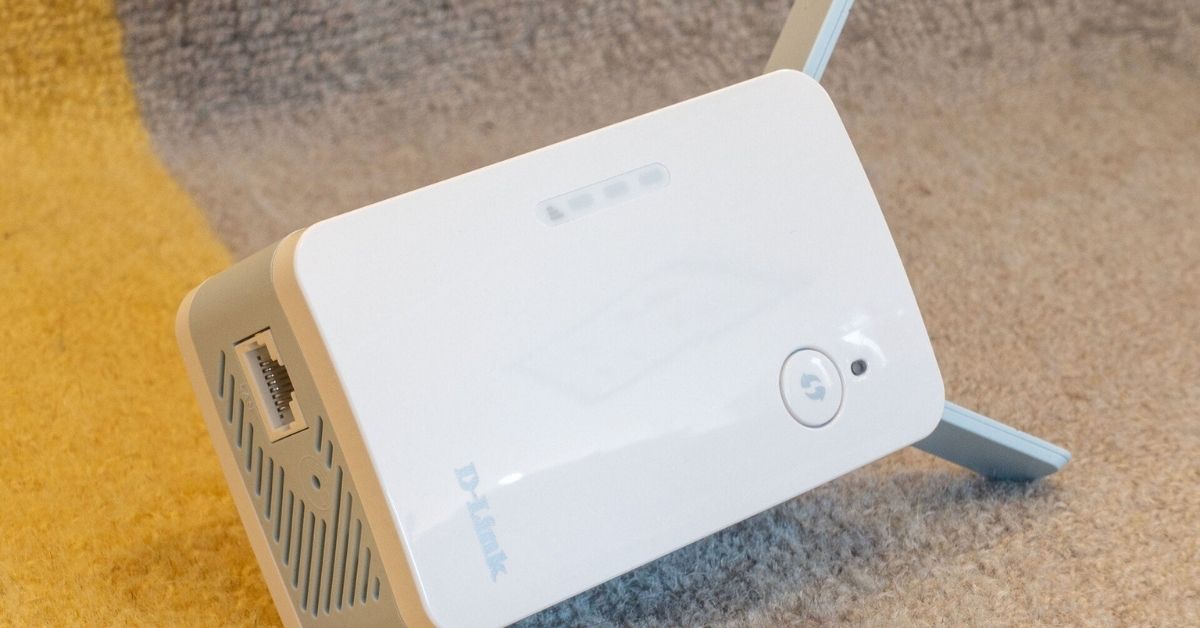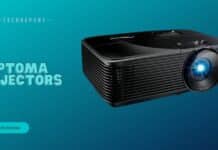Wi-Fi Extenders 101: Boost Your Signal Strength

A Wi-Fi extender, often called a repeater or signal booster, is a device designed to enhance the coverage of an existing Wi-Fi network. Acting as a bridge between your router and areas with weak signals, the Wi-Fi extender captures and amplifies the signal, effectively eradicating dead zones in your home or office.
In simpler terms, it’s like having a powerful relay station that extends the reach of your Wi-Fi lighthouse, ensuring a more robust and consistent connection throughout your space.
In homes or offices with thick walls, multiple floors, or considerable distances from the router, Wi-Fi signals can weaken, leading to frustrating dead zones. Wi-Fi extenders play a crucial role in overcoming these challenges, turning those previously problematic areas into zones of reliable connectivity.
The significance lies in the seamless experience they offer by filling in coverage gaps, ensuring all corners of your space enjoy a strong and consistent Wi-Fi signal. This isn’t just about connectivity; it’s about maximizing the utility of your network for smooth browsing, streaming, gaming, and all your online activities.
By understanding the definition and importance of Wi-Fi extenders, you’re on the path to transforming your connectivity experience. Let’s delve deeper into the types of Wi-Fi extenders to help you make an informed choice.
Also Read: How to Download APK on iPhone
Types of Wi-Fi Extenders
Single-Band Extenders
Single-band Wi-Fi extenders operate on the 2.4GHz frequency band. This type of extender provides basic coverage extension, suitable for tasks like web browsing and email. The 2.4GHz frequency has a longer range, making it effective for reaching distant areas, but it may offer slower speeds compared to dual-band alternatives.
Single-band extenders are like the workhorses of Wi-Fi extension, providing reliable coverage for everyday tasks.
Dual-Band Extenders
Dual-band Wi-Fi extenders, on the other hand, work on both the 2.4GHz and 5GHz frequency bands. This allows them to offer faster speeds and better performance, making them suitable for bandwidth-intensive activities like streaming, gaming, and video conferencing. The 5GHz frequency, while providing higher speeds, may have a slightly shorter range compared to 2.4GHz.
If you have demanding tasks that require a robust connection, a dual-band extender is a preferable choice.
Mesh Wi-Fi Systems
While not traditional extenders, mesh Wi-Fi systems deserve mention. They differ in structure from single and dual-band extenders. Mesh systems consist of interconnected nodes that create a seamless Wi-Fi blanket across your space, eliminating dead zones altogether.
Mesh Wi-Fi is the pinnacle of coverage, offering a unified network experience without relying on signal relay.
Understanding these types is crucial in choosing the right extender that aligns with your specific needs. Now, let’s move on to the practical aspects of Wi-Fi extender installation and setup.
Installation and Setup
Setting up a Wi-Fi extender is a straightforward, plug-and-play process. Most extenders come with user-friendly interfaces and step-by-step instructions to ensure a hassle-free installation. Begin by plugging the extender into a power outlet within range of your router’s signal.
With the simplicity of plug-and-play, even those without technical expertise can enhance their Wi-Fi coverage effortlessly.
Wi-Fi extenders are designed to be compatible with various router brands. Before making a purchase, it’s advisable to check the compatibility of the extender with your existing router. Ensure that both devices support the same Wi-Fi standards, such as 802.11ac or 802.11ax, to guarantee seamless operation.
Compatibility checks are a crucial step to ensure optimal performance and integration with your existing network infrastructure.
The effectiveness of a Wi-Fi extender is influenced by both its model and the layout of your home or office. While some extenders can cover expansive areas of up to 2,000 square feet, others may be suitable for smaller spaces. Factors such as walls, furniture, and appliances can impact the signal strength and coverage range.
Understanding the range and performance factors helps in strategically placing the extender for maximum coverage, eliminating dead zones effectively.
Now that we’ve covered the installation basics, let’s explore troubleshooting and optimization strategies to ensure your Wi-Fi extender operates at its full potential.
Also Read: How to Delete Wallpapers on iOS 15
Troubleshooting and Optimization
If you’re experiencing suboptimal performance, consider repositioning your Wi-Fi extender. Move it closer to the router or to a different outlet to enhance signal strength. Experiment with different locations to find the optimal placement that eliminates dead zones and ensures a strong, consistent connection throughout your space.
Simple adjustments in the extender’s position can make a significant difference in overall performance.
Overheating can impact the performance of your Wi-Fi extender. Ensure proper ventilation by placing the extender in an open area, free from obstructions. Adequate airflow prevents overheating and helps maintain stable, reliable connectivity. Keep in mind that an overheated extender may experience performance issues or unexpected disruptions.
Prioritizing proper ventilation safeguards your extender and contributes to a consistent and reliable Wi-Fi experience.
Regular firmware updates are essential for maintaining stability and addressing potential bugs in your Wi-Fi extender. Check the manufacturer’s website for the latest firmware releases and follow the provided instructions for updating. This proactive measure ensures that your extender operates with optimal efficiency, delivering a reliable signal to all connected devices.
Staying up-to-date with firmware updates is a key practice in ensuring the stability and longevity of your Wi-Fi extender.
By addressing these troubleshooting and optimization aspects, you’ll maximize the performance of your Wi-Fi extender. Next, let’s delve into the connection speed and bandwidth considerations to further enhance your Wi-Fi experience.
Speed and Bandwidth Considerations
Understanding the relationship between your Wi-Fi extender and router speeds is crucial for managing expectations. It’s important to note that the speed of your Wi-Fi extender is limited by the speed of your router. If your router has a slower speed, investing in a high-speed extender may not yield significant benefits.
Align your extender’s speed with that of your router to optimize performance and ensure a seamless Wi-Fi experience.
While Wi-Fi extenders don’t directly increase your internet speed, they play a pivotal role in improving the perceived speed in areas with weak coverage. By amplifying and extending the signal, they provide a stronger connection, reducing latency and enhancing the overall user experience. This is particularly beneficial for activities like streaming, online gaming, and video conferencing.
Experience a noticeable improvement in speed and performance in previously weak coverage areas, enhancing your online activities.
As we navigate through speed considerations, let’s explore the differences among popular Wi-Fi extender brands and models to help you make an informed decision when selecting the one that best fits your requirements.
Brand and Model Comparisons
Popular Wi-Fi Extender Brands
- TP-Link: Known for reliability and affordability, TP-Link offers a range of Wi-Fi extenders catering to different needs. Models like the TP-Link RE650 are praised for their performance and ease of use.
- Netgear: Netgear stands out for its high-performance extenders. The Netgear Nighthawk series, such as the Nighthawk AX8, is recognized for its speed and advanced features, making it suitable for demanding users.
- D-Link: D-Link provides a variety of extenders with a focus on user-friendly interfaces. The D-Link DAP-1650, for instance, is applauded for its simplicity and reliable performance.
- ASUS: ASUS extends its reputation for quality to Wi-Fi extenders. The ASUS RP-AX56, part of the AiMesh system, is noted for its strong signal and seamless connectivity.
Factors to Consider in Choosing a Model
- Coverage Needs: Assess the size of your space and choose an extender with adequate coverage. Consider high-powered models for larger areas and basic ones for smaller spaces.
- Budget Considerations: Wi-Fi extenders come at various price points. Evaluate your budget and find a model that aligns with your financial considerations while meeting your performance needs.
- Speed Requirements: Match the speed of the extender with your router to ensure compatibility. If you have a high-speed router, opt for a dual-band extender for optimal performance.
- User-Friendly Features: Some extenders offer additional features like Ethernet ports, guest networks, and parental controls. Consider these extras based on your specific requirements.
By understanding the strengths of popular brands and considering key factors when choosing a model, you can make an informed decision that suits your connectivity needs and preferences. Next, let’s explore the cost and value aspects of Wi-Fi extenders.
Cost and Value Analysis
Wi-Fi extenders come in a variety of price ranges, catering to different budgets and requirements. Here’s an overview:
- Basic Single-Band Extenders: Generally priced around $30, these extenders offer budget-friendly solutions for smaller spaces with moderate coverage needs.
- Mid-Range Dual-Band Extenders: Priced between $50 to $100, these models provide a balance between affordability and enhanced performance, making them suitable for average-sized homes or offices.
- High-End Dual-Band or Mesh Systems: Premium dual-band extenders or mesh Wi-Fi systems can range from $100 to over $200. These models are designed for larger spaces and offer advanced features for a seamless connectivity experience.
When evaluating Wi-Fi extenders, consider both your budget and coverage requirements. Here’s a practical approach:
- Basic Users with Limited Budgets: Opt for a budget-friendly single-band extender if you have a smaller space and primarily engage in light internet activities.
- Average Users with Moderate Budgets: Dual-band extenders in the mid-price range are suitable for average-sized homes or offices, offering a good balance between cost and performance.
- Power Users with Larger Budgets: Invest in a high-end dual-band extender or mesh system if you have a larger space, demanding activities, and prioritize advanced features for an optimized Wi-Fi network.
By aligning your budget with your coverage needs, you ensure that you get the best value for your investment. Now, let’s delve into the crucial aspect of ensuring the security of your extended Wi-Fi network.
Also Read: How to Put SIM Card in iPhone 11
Security Features
Wi-Fi extenders typically support the latest security protocols, with a common standard being WPA2 (Wi-Fi Protected Access 2). WPA2 is a robust encryption method designed to secure wireless networks and protect them from unauthorized access. When setting up your Wi-Fi extender, ensure that it’s configured to use WPA2 security to safeguard your network.
Implementing WPA2 security protocols adds an extra layer of protection, keeping your extended Wi-Fi network secure from potential threats.
In addition to WPA2, ensure that your Wi-Fi extender employs strong encryption methods. Encryption scrambles the data transmitted between your devices and the extender, making it difficult for unauthorized users to intercept or decipher the information. Check the extender’s settings to confirm the use of strong encryption, providing peace of mind regarding the security of your extended Wi-Fi network.
Strong encryption is your frontline defense against potential security breaches, contributing to a secure and reliable Wi-Fi environment.
Now that we’ve covered the crucial aspect of security, let’s move on to considerations related to power consumption and energy efficiency in Wi-Fi extenders.
Power Consumption and Energy Efficiency
Wi-Fi extenders are designed with energy efficiency in mind, typically consuming minimal power. The low power consumption ensures that the extender operates efficiently without significantly impacting your electricity bills. This characteristic makes Wi-Fi extenders an energy-conscious choice for extending network coverage.
Enjoy the benefits of extended Wi-Fi coverage with peace of mind, knowing that most extenders are designed for minimal environmental impact.
For those with a focus on energy efficiency, some Wi-Fi extender models come with specific features to minimize power usage. Look for energy-efficient options that may include:
- Sleep Mode: Extenders with a sleep mode can automatically reduce power consumption during periods of inactivity, contributing to energy savings.
- Power Scheduling: Models that allow you to schedule when the extender operates can further optimize energy usage based on your specific needs.
Choosing an energy-efficient Wi-Fi extender aligns with environmental considerations while ensuring your extended network operates in a cost-effective and eco-friendly manner.
Now, let’s explore considerations for future upgrades and compatibility to help you future-proof your Wi-Fi network.
Future Upgrades and Compatibility
As technology advances, considering future Wi-Fi standards becomes crucial. Wi-Fi 6 (802.11ax) and its extended version, Wi-Fi 6E, offer faster speeds, lower latency, and improved performance compared to previous standards. While many devices and routers are still catching up to these standards, investing in a Wi-Fi extender that supports Wi-Fi 6 or 6E ensures compatibility with the latest technologies.
Prepare your network for the future by opting for a Wi-Fi extender compatible with Wi-Fi 6 or 6E, ensuring optimal performance as devices and routers evolve.
The compatibility of your Wi-Fi extender not only depends on current router standards but also on potential future upgrades. When planning for future router or device upgrades, ensure that the extender supports these advancements. This proactive approach guarantees seamless integration as you enhance your network with the latest technology.
Future-proof your Wi-Fi setup by selecting an extender that aligns with your plans for upgrading routers and devices, ensuring a smooth transition to advanced technologies.
With an eye on future compatibility, let’s explore another practical consideration: the integration of mobile apps for managing and monitoring your Wi-Fi extender remotely.
Mobile App Integration
Many Wi-Fi extenders come equipped with mobile apps that simplify the management of settings. These apps allow users to adjust configurations, set up guest networks, and perform troubleshooting tasks remotely. The convenience of managing your Wi-Fi extender through a mobile app adds flexibility, especially when you’re away from your home or office.
Effortlessly manage your Wi-Fi extender settings from anywhere using intuitive mobile apps, streamlining the configuration process for optimal performance.
In addition to managing settings, mobile apps for Wi-Fi extenders often include performance monitoring features. Users can track the performance of their extended network, check the strength of the signal in different areas, and receive notifications about potential issues. This real-time monitoring capability empowers users to stay informed and address any connectivity issues promptly.
Stay in the loop with the performance of your extended Wi-Fi network through user-friendly mobile apps, ensuring a seamless and uninterrupted online experience.
As we wrap up the considerations for optimal Wi-Fi extender usage, let’s conclude by summarizing key points and encouraging users to make informed decisions for an enhanced connectivity experience.
In Crux
As you embark on enhancing your Wi-Fi coverage, remember that an informed decision leads to an optimized online experience. Consider your unique needs, from space coverage to performance demands, and align them with the features offered by various Wi-Fi extenders.
Investing time in research and understanding the intricacies of Wi-Fi extenders positions you to make a choice that not only meets your current requirements but also sets the stage for future advancements in connectivity technology.
Choose wisely, and may your extended Wi-Fi network bring seamless connectivity to every corner of your space, ensuring an enjoyable online experience for all your activities. If you have further questions or need assistance, feel free to reach out to reliable sources or the manufacturer’s support.
Happy surfing!
How much did you like Our Detailed Choose the Best Wi-Fi Extender: Improve Signal Range? Review Also, please share these Blogs with your friends on social media.
Related Blogs
- Is iPhone 14 Worth the Hype
- Unblock Banned Apps
- Best Cheap VPN Services
- Curved or Flat: Which TV Should You Buy?
- Samsung S23 vs Pixel 7
FAQs about Wi-Fi Extenders
How do I choose between single-band and dual-band Wi-Fi extenders?
The choice between single-band and dual-band Wi-Fi extenders depends on your specific needs. Single-band extenders operate on the 2.4GHz frequency, providing basic coverage suitable for lighter tasks. In contrast, dual-band extenders operate on both the 2.4GHz and 5GHz frequencies, offering faster speeds and better performance for bandwidth-intensive activities like streaming and gaming. Consider your usage requirements and the size of your space when making this choice.
Can I set up a Wi-Fi extender on my own, and what steps are involved in the installation process?
Yes, setting up a Wi-Fi extender is typically a user-friendly, plug-and-play process. Most extenders come with step-by-step instructions and intuitive interfaces. Start by plugging the extender into a power outlet within range of your router's signal. Follow the on-screen instructions provided by the extender's setup wizard, which will guide you through the configuration process. This straightforward installation ensures that even those without technical expertise can enhance their Wi-Fi coverage effortlessly.
How can I ensure the security of my extended Wi-Fi network?
Ensuring the security of your extended Wi-Fi network is crucial. Most Wi-Fi extenders support WPA2 security protocols, a robust encryption method designed to protect wireless networks from unauthorized access. During the setup process, make sure your extender is configured to use WPA2 security. Additionally, check that the extender employs strong encryption methods to scramble data transmitted between devices and the extender, enhancing overall security and safeguarding against potential threats.
What factors should I consider when comparing different Wi-Fi extender brands and models?
When comparing Wi-Fi extender brands and models, several factors come into play. Consider the coverage needs of your space, your budget constraints, and any additional features offered by the extenders. Popular brands like TP-Link, Netgear, D-Link, and ASUS each have their strengths, with models catering to various user preferences. Evaluate the specific features offered by different models, such as Ethernet ports, guest networks, and parental controls, to find the extender that aligns best with your connectivity requirements and budget.























